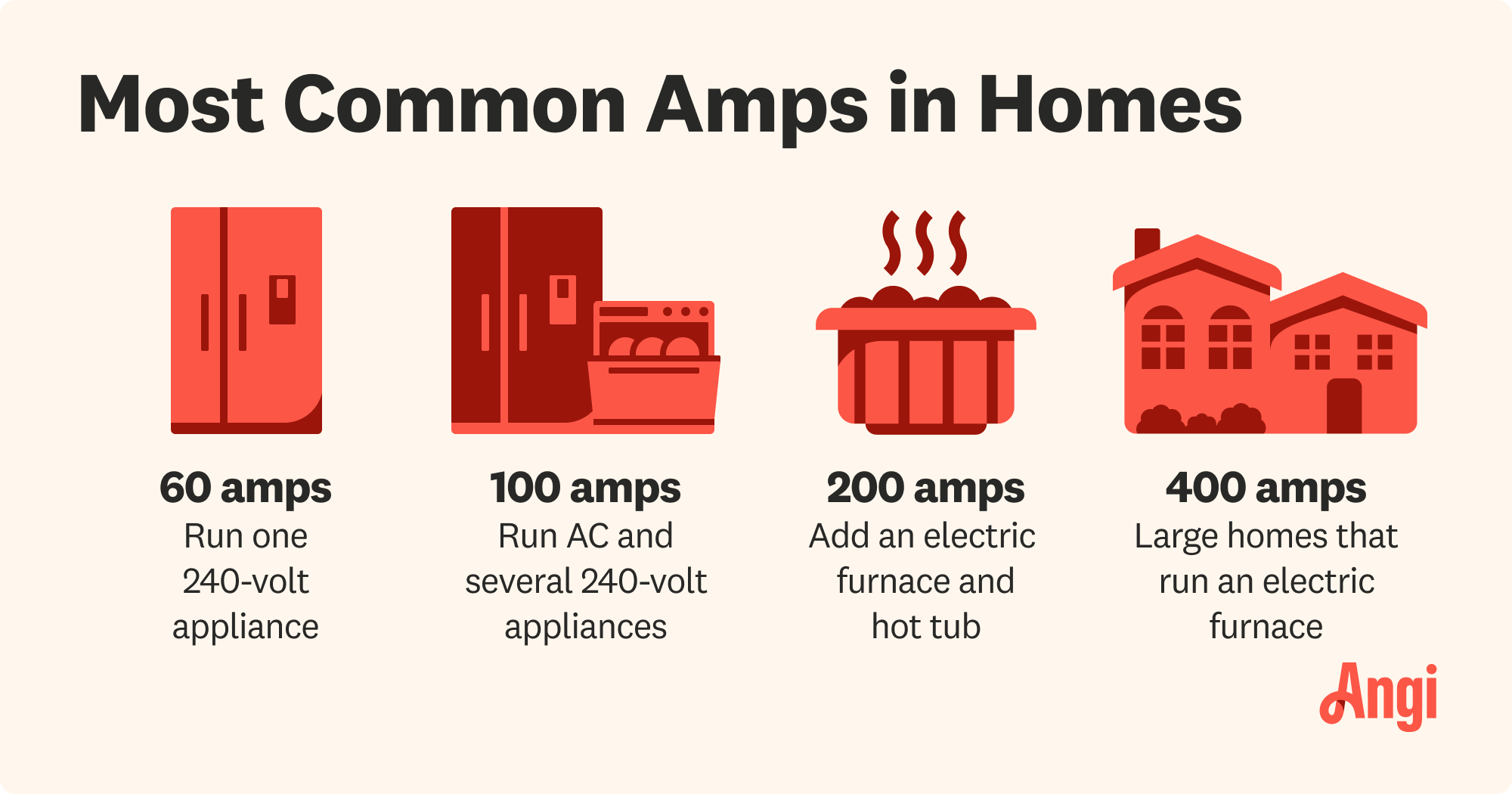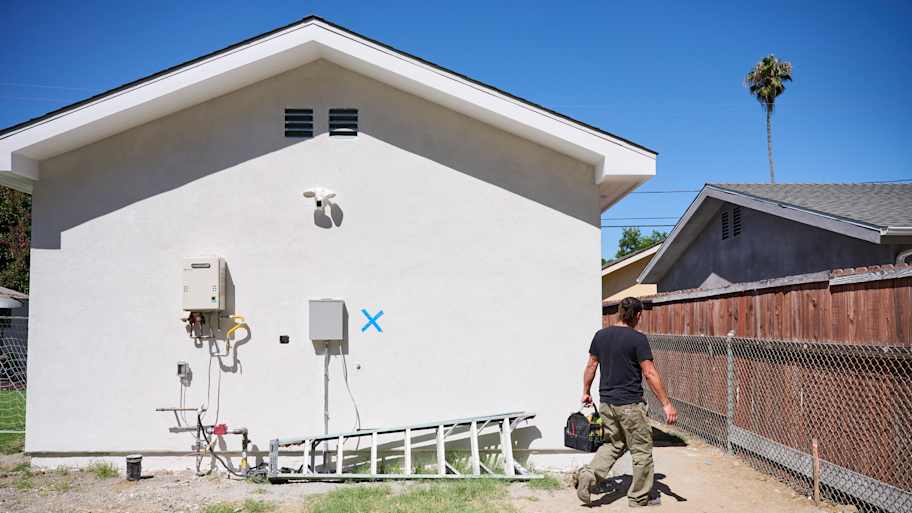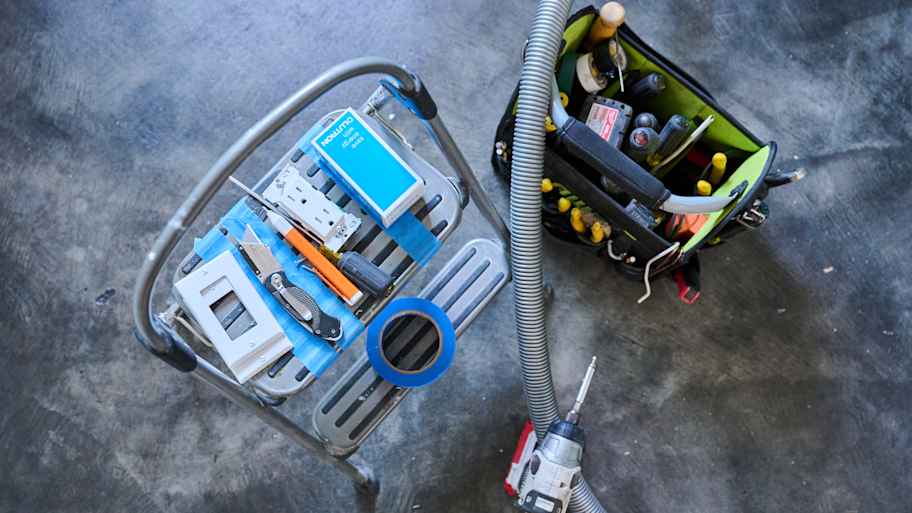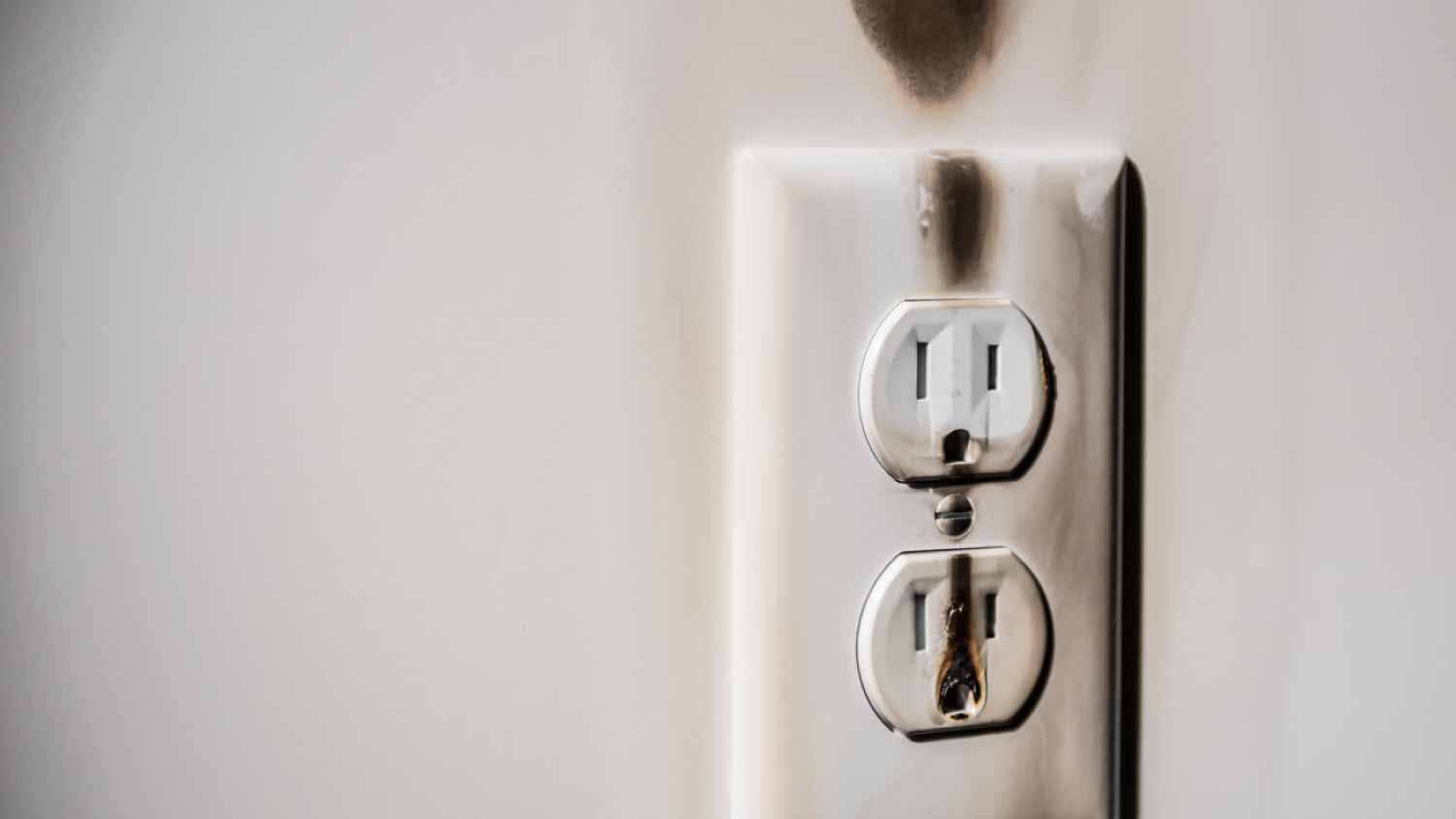Electrical Load Calculation: 7 Steps to Determine Your Home’s Electrical Needs
Finding out your home’s electrical service needs doesn’t have to be a hefty load


Electrical load is the total amount of power needed to run your appliances at a given time.
Understanding the relationship between amps, volts, and watts will help you relate the wattage of your electrical load to the amperage of your service panel.
Always ensure your electrical load calculation stays within 60% to 80% of your service panel’s total capacity.
Whether you’re focusing on your whole house or a single room, it’s vital to learn how to calculate your home’s electrical load. This basic measurement will inform you of your home amperage requirements. While a professional electrician can provide a very accurate measurement of your electrical load, you can calculate a helpful estimate with our electrical load calculation guide.

What Is an Electrical Load?

An electrical load is the total amount of power required to run all the appliances and electronics in your home, from your phone charger to your central AC system. This power is usually measured in watts. Home service panels come in varying levels of amps (usually 100 to 400) that can handle different wattages and electrical loads.
By calculating your electrical load, you’ll ensure you have a sufficiently-sized service panel and prevent electrical dangers from overloaded circuits.
What Is Your Home’s Electrical Capacity?
Your home’s total electrical capacity is determined by the built-in electrical system—the electrical service. Over time, as modern households have incorporated more and more electrical devices, electrical capacity has increased. Here’s a breakdown by construction era:
| Home Construction Era | Electrical Capacity |
|---|---|
| Pre-1950 | 30 amp capacity |
| 1950-1960 | 60 amp capacity |
| 1960-1980 | 100 amp capacity |
| 1980-2000 | 200 amp capacity |
| 2000-2025 | 200–800 amp capacity |
If necessary, you can upgrade the electrical service or total amperage of your home. Upgrading your electrical system can be done during remodeling to meet National Electrical Code (NEC) standards or as an independent task. Consider hiring a local electrician to increase your home’s electrical load if your breakers frequently flip because device overload.
Capacity vs. Load: What’s the Difference?
Home electrical systems frequently use the terms capacity and load, which can be confusing to newcomers. The difference between capacity and load for a house is very important when deciding when and how to upgrade your system. As the load gets closer to the capacity of a home, problems like overloads (which trip breakers) and short circuits become more common.
The capacity of a home electrical system refers to how much electricity the system can handle. For these purposes, we’re talking about capacity in amperage, but capacity can also be defined by volts and overall wattage.
The load of an electrical system refers to the amount of electricity actually being used. For example, if you add together the amp requirements of every active electrical device in a room, that is the load being drawn from the electrical system by that room. Your home’s electrical load shouldn’t go beyond 80% of the home’s capacity. If it’s higher than that, it’s time to think about upgrading your electrical system.
How to Calculate Your Electrical Load
Here are two ways to calculate the suggested amperage you’ll need to power your home.
1. Calculate by Wattage of All Appliances
Add up the wattage of all general lighting circuits and the wattage rating for plug-in outlet circuits.
Add up the wattage for all of the year-round appliances in your home (excluding HVAC systems), such as the washer and dryer, dishwasher, refrigerator, and microwave.
Total up the wattage numbers from steps 1 and 2 and subtract 10,000 watts.
Multiply the result by 0.4 (40%).
Add the 10,000 watts back in.
Compare the wattage ratings for your air conditioner and furnace; add the larger number to your total since you’ll only be running one at a time.
Divide the resulting wattage by 240 volts (the typical main service for homes) to calculate the electrical load in amps.
2. Calculate by Breaker Size
Isolate the circuit that you want to measure.
Note the breaker’s size.
Multiply that figure by the circuit’s rated voltage to get the maximum load capacity.
For example, if you have a 20-amp breaker operating at 100 volts, its maximum load is 2,000 watts.
Average Electrical Load Calculations
Calculations are based on the average wattage of common household appliances. Calculations rounded to the nearest whole number.
| Circuit System | Average Electrical Load In Watts |
|---|---|
| Cooling System | 3,000–4,000 |
| Electric Furnace | 10,000–50,000 |
| Washing Machine | 300–500 |
| Electric Dryer | 1,800–5,000 |
| Oven | 2,000–5,000 |
| Electric Stove | 1,000–3,000 |
| Water Heater | 1,125–4,000 |
| Dishwasher | 1,200–2,400 |
| Disposal | 500–1,500 |
| Garage Door | 400 |
| EV Chargers | 7,200 |
| Total | 28,525–83,000 |
Average Electrical Load by Square Foot
| Average Square Footage | Average Electrical Load In Watts |
|---|---|
| 1,000 | 28.5–83 |
| 1,500 | 19–55 |
| 2,000 | 14–41.5 |
| 2,500 | 11–33 |
| 3,000 | 9.5–28 |
| 4,000 | 7–21 |
| 5,000 | 6–17 |
| 6,000 | 5–14 |
Understanding Watts, Amps, and Volts
Since home service panels are measured in amps ranging anywhere from 100 to 400, you’ll need to calculate the amperage of your service panel versus the total wattage of your electrical load.
You’ll also need to factor in an additional safety margin of around 60% to 80%. In other words, you only want your electrical load to make up roughly 60% of your electrical system’s total capacity. Most experts advise that your safety margin should be no higher than 80%.
To perform your calculations, you need to understand the relationship between volts, amps, and watts. Here are the basic formulas:
Watts = Volts x Amps
Amps = Watts / Volts
You can use these formulas to calculate the capacity of your home's overall electrical service. For example, let’s say you’re working with a 150-amp service panel. Since the main service voltage that enters a home is typically 240 volts, the calculation would be:
240 volts x 150 amps = 36,000 watts
80% of 36,000 watts = 28,800 watts
This means that a 150-amp electrical service should not be expected to accommodate an electrical load of more than 28,800 watts at once.
Where to Find the Wattage of Your Appliances
So, where can you find the wattages of your devices and appliances for your electrical load calculation? Most appliances will have a little sticker on the bottom or back that shows how much power they use. You can also look up the technical specifications for the appliance online or in the user manual if you have it handy. In the meantime, here are some general ranges to reference.
Plan Ahead and Round Up Your Estimated Electrical Load
While there are plenty of ways to improve your home’s energy efficiency, the last thing you want is to be constantly at odds with your circuit breakers or even leave your home vulnerable to electrical fires and other hazards.
When planning your home’s electrical needs, it’s always best to err on the side of caution and get a service panel with a higher capacity, potentially even higher than your 60% to 80% safety margin. Especially if you plan on staying in your home long-term, consider planning for the future and opting for the higher-amp service panel.





- Home Generator Repair
- Lamp Repair
- Electric Repair
- Generator Installation
- TV Antenna Services
- Emergency Electricians
- Commercial Electricians
- Attic Fan Installation
- Attic Fan Repair
- Exhaust Fan Installation
- Electric Inspectors
- Subcontractors
- Electrical Construction
- EV Charger Installer
- Chandelier Installation
- Doorbell Installation
- Bathroom Fan Installation
- Ring Installers
- Electrical Panel Upgrade
- How To Upgrade Your Electrical Panel Safely
- How Many Outlets on a 20-Amp Circuit: Electrical Load, NEC Requirements, and More
- Amps vs. Volts vs. Watts: Everything You Need to Know
- The Ultimate Home Inspection Electrical Checklist
- What Is an Electrical Inspection and When Do You Need One?
- Why Hire an Electrician? Top Reasons to Consider
- How Many Amps Does a Fridge Use? A Look at Full and Small Sizes
- How Many Watts Does a House Use, and Why Does It Matter?
- What’s the Best 100-Amp Wire Size for Service Panels?
- Whole-House Generator Sizing: Everything You Need to Know










